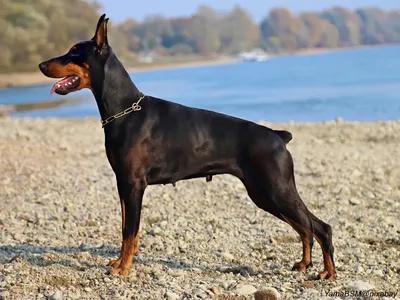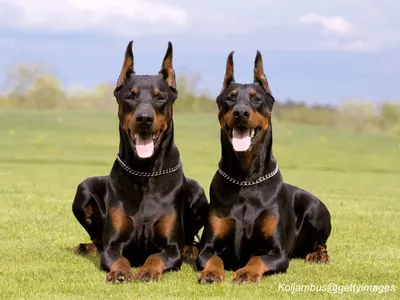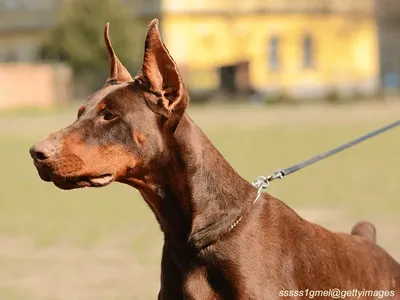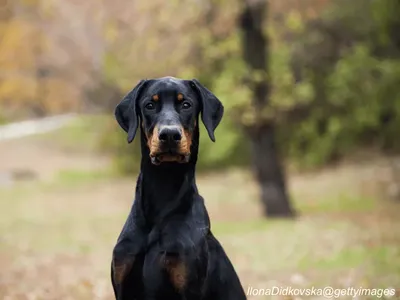Doberman Pinscher
AKC & CKC Working Group
Origin & History
The Doberman Pinscher was developed in Germany around 1890 by Karl Friedrich Louis Dobermann, a tax collector who wanted a medium-sized guardian dog to accompany him on his rounds. By combining several breeds including the Rottweiler, German Pinscher, Greyhound, and Weimaraner, he created an intelligent, loyal, and fearless protector.
Originally used as guard dogs and police dogs, Dobermans served with distinction in both World Wars. Today, they excel as police/military dogs, service animals, and family companions while maintaining their elegant appearance and protective instincts.
Known for their sleek lines and noble bearing, Dobermans combine athleticism with intelligence, forming deep bonds with their families while remaining ever watchful.
Stats:
- Height: 24-27 inches
- Weight: 60-100 pounds
- Coat: Short, smooth, and glossy
- Colors: Black, red, blue, or fawn with rust markings
- Lifespan: 10-12 years
| Traits: | 1 | 2 | 3 | 4 | 5 |
|---|---|---|---|---|---|
| Energy: Very high; needs vigorous daily exercise and mental stimulation | ✓ | ||||
| Easy To Train: Highly intelligent and eager to please; excels in training | ✓ | ||||
| Grooming: Low maintenance; occasional brushing and baths | ✓ | ||||
| Family Dog: Devoted to family; excellent with children when socialized | ✓ | ||||
| Watchdog: Exceptional natural guardian; highly protective | ✓ | ||||
| Beginner Friendly: Very intelligent; but can be challenging due to size & energy | ✓ | ||||
| Prey Drive: High; may chase small animals | ✓ | ||||
| Barking: Moderate; will alert to potential threats | ✓ | ||||
| Good with other dogs: If properly socialized when young; strong guarding instincts may lead to aggression if not managed. |
✓ |
Health Concerns:
- Dilated Cardiomyopathy: Serious heart condition
- Von Willebrand's Disease: Blood clotting disorder
- Hip Dysplasia: Common in large breeds
- Wobbler Syndrome: Cervical spinal instability
- Hypothyroidism: Underactive thyroid gland
- Progressive Retinal Atrophy: Degenerative eye disease
Please check the Canine Health Information Center (CHIC) and parent breed clubs for health information.
Glossary of general canine health conditions.



